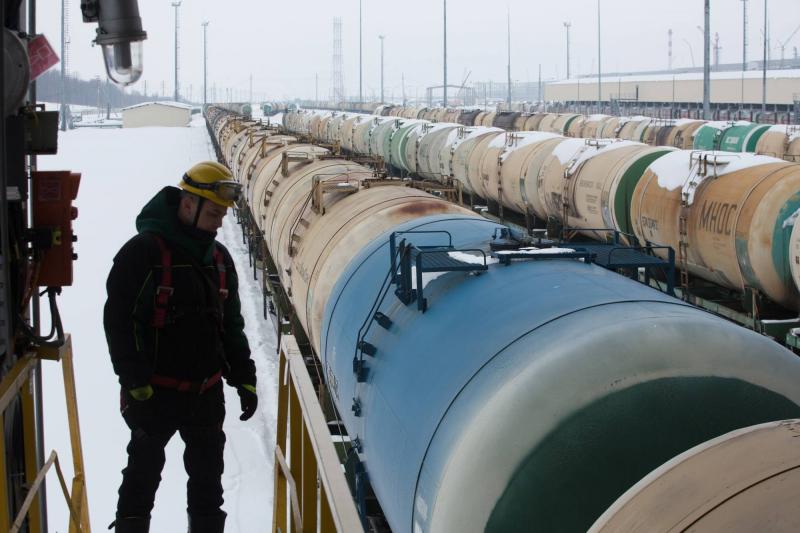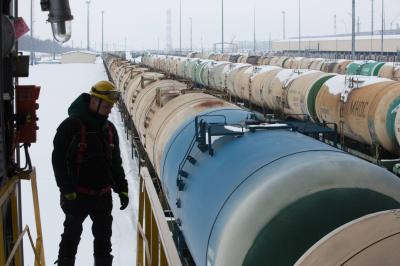In September, Russia announced a temporary ban on gasoline and diesel exports to all countries except four former Soviet states to address a domestic supply shortage. This move disrupts global trade, which has already had to adjust to Western sanctions on Russian fuel exports. Russia later eased some restrictions, stating it would allow the export of fuel used to supply certain ships and high-sulfur diesel. The government has not yet provided a timeline for any further easing of restrictions.
#### What is Causing the Problem?
Traders noted that Russia's fuel market, one of the largest oil producers in the world, has been affected by several factors, including maintenance work at oil refineries, difficulties faced by railways, and the weakened ruble which encourages fuel exports. Russia has attempted to address the shortage of diesel and gasoline in recent months but resorted to imposing export restrictions to prevent a fuel crisis, which could be embarrassing for the Kremlin ahead of the scheduled presidential elections in March. Deputy Prime Minister Alexander Novak stated on October 4 that the restrictions had a positive effect, with inventories increasing by 430,000 tons since their imposition.
#### What is the Size of the Problem Facing Global Fuel Markets?
The diesel export ban will have the greatest impact since Russia is the largest maritime fuel exporter globally, followed by the United States. From the start of the year until September 25, Russia shipped an average of 1.07 million barrels of diesel per day, accounting for over 13.1% of total maritime diesel trade, according to analytics firm Fortecsa. Fortecsa also stated that Russia's significance as an exporting country is lower concerning gasoline, with an average of 110,000 barrels shipped per day from January 1 to September 25.
#### How Long Will the Ban Last?
Russia stated that exports would resume once its domestic market stabilizes, but it did not specify a timeframe. Kommersant newspaper reported on October 4 that the Russian government is ready to ease the diesel export ban in the coming days. Additionally, TASS news agency quoted Energy Minister Nikolai Shulginov as saying that the government is discussing allowing partial fuel exports "at all levels." Analysts, including those from FGE Energy consulting firm, indicated that the diesel export ban might last for up to two weeks before Russia replenishes its stocks and resumes exports. Expectations vary regarding the duration of the gasoline export ban, with JP Morgan suggesting it could last for two weeks until the end of the harvest season in October, while FGE Energy posited that replenishing Russian gasoline stocks might take up to two months.
#### Who Will Be Most Affected?
After the European Union banned Russian fuel imports due to Moscow's invasion of Ukraine, Russia shifted its diesel and other fuel exports that were heading to Europe towards Brazil, Turkey, and several countries in North and West Africa, as well as Gulf states in the Middle East. Gulf countries, which have major refineries, re-export fuel. The Russian ban would alter those flows once again. Data from LSJE showed that diesel supplies from Russian ports to Brazil were around four million tons from January 1 to September 25, compared to 74,000 tons in all of 2022. Russian fuel is replacing Brazil's diesel imports from the United States. Market sources noted that if the Russian ban on diesel exports persists for an extended period, Brazil might have to find alternative sources for up to 400,000 tons of fuel monthly. Dealers also mentioned that Turkey was the top destination for diesel supplies from Russian ports after the EU ban, totaling around seven million tons since the beginning of the year, but it will still be able to purchase high-sulfur gas oil.
#### Where Will Alternative Supplies Come From?
Trade and shipping sources expect African countries to turn to gas oil and diesel supplies shipped from the Middle East, India, and Turkey. Ship tracking data from Kpler and two brokerage firms indicated that at least 132,000 tons of diesel fuel would be directed to Africa from the new Duqm refinery in Oman. Traders suggested that importers from Latin America are likely to pivot to the Gulf Coast of the US and the Middle East. Europe may also fill part of the gap caused by the Russian gasoline export ban, with FGE stating that suppliers from Northwestern Europe, who lost market share in West Africa to Russian supplies this year, could step in.
#### What Will the Change in Fuel Trade Flows Mean for Europe?
Since the ban on Russian fuel imports, Europe has been searching for suppliers from other regions, including the Middle East. Competition for these supplies is expected to increase due to the Russian export ban, which will have an indirect impact on Europe. As a result, traders anticipate that northeastern Asia refineries in China and South Korea will boost diesel exports to Europe. Data from Kpler for ship tracking and data from one shipping brokerage indicated that China exported around 190,000 tons of diesel to Europe in September and is set to ship another 45,000 tons in October towards Western countries.




